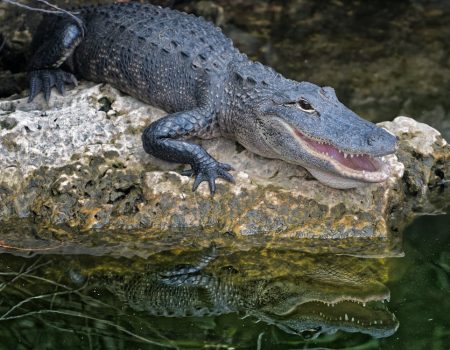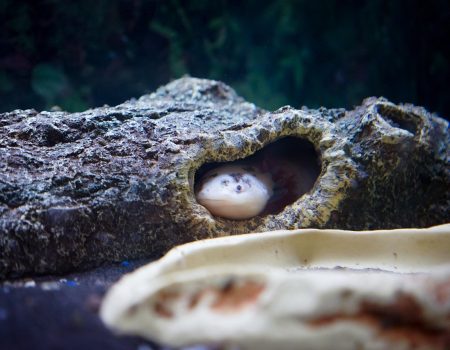You’re setting up a new home for your axolotl, and you want everything just right. A quarantine tank is more than a temporary space—it’s a safe haven for health checks, treatment, and acclimation.
Done correctly, it protects your axolotl and any tank mates from illness.
Let’s talk about how to prepare the perfect quarantine tank step by step so your aquatic friend thrives.
What Is a Quarantine Tank and Why Do You Need It?

A quarantine tank is a separate tank used to isolate axolotls for observation, treatment, or recovery. It’s essential when introducing a new axolotl, treating illness, or giving your pet a stress-free space to heal.
This tank helps prevent diseases from spreading to your main aquarium. Even healthy-looking axolotls can carry parasites or infections that only show up later.
In captivity, axolotls can live up to 15 years, provided they are kept in suitable tank conditions.
Key Benefits of a Quarantine Tank
- Disease Prevention: Stops illnesses from spreading to other axolotls.
- Stress-Free Healing: Provides a calm environment for recovery.
- Health Monitoring: Lets you closely observe eating, activity, and overall behavior.
Setting Up the Perfect Quarantine Tank
Now that you understand its importance, let’s go over how to set up a quarantine tank tailored to an axolotl’s needs.
Choosing the Right Tank Size
Axolotls need space to move around, even in quarantine. A 10 to 20-gallon tank works best for most. Avoid smaller tanks, as they can limit movement and create unstable water conditions.
Selecting a Bare-Bottom or Substrate-Free Tank
Use a bare-bottom setup for easy cleaning. Axolotls produce a lot of waste, and bare bottoms make spot-cleaning simple. If you prefer substrate, opt for fine sand, but avoid gravel—it can cause blockages if ingested.
The minimum recommended tank size for an axolotl is 10 gallons; however, a 20-gallon tank is preferred for better water quality management due to their high waste production.
Adding Essential Equipment
A few pieces of equipment are crucial for your quarantine tank:
- Sponge Filter: Gentle filtration is important since axolotls have delicate gills. A sponge filter provides biological filtration without creating strong currents.
- Heater (if necessary): Axolotls thrive in cool water, typically 60–64°F. If your room gets colder, a heater with a thermostat can maintain stable temperatures.
- Air Stone: Boost oxygen levels with an air stone or bubbler to keep water well-oxygenated.
Water Quality Matters Most
Axolotls are highly sensitive to water conditions. Make sure you:
- Dechlorinate the Water: Use a water conditioner to remove chlorine and chloramine.
- Cycle the Tank: A properly cycled tank has beneficial bacteria to break down waste. If cycling isn’t complete, use water conditioners like Seachem Prime daily to detoxify ammonia.
- Test Water Regularly: Keep parameters stable:
- Ammonia: 0 ppm
- Nitrite: 0 ppm
- Nitrate: Under 20 ppm
- pH: 6.5–8.0
Hiding Spots and Decorations
Add hides and shelters to make your axolotl feel secure. PVC pipes, ceramic hides, or smooth terracotta pots work well. Keep decorations minimal and avoid sharp edges that can harm delicate skin or gills.
Nitrate levels in the tank should ideally remain below 20 ppm to prevent stress and health issues in axolotls.
Quarantine Procedures for New Axolotls
When introducing a new axolotl, quarantine them for at least 30 days before moving them to the main tank. Here’s what to watch for:
Monitoring for Signs of Illness
Check daily for:
- Unusual Behavior: Lethargy, erratic swimming, or floating.
- Physical Changes: Redness, fungus, or swelling.
- Eating Habits: Lack of appetite can signal stress or illness.
Handling Illness During Quarantine
If you notice signs of illness, take these steps:
- Salt Baths for Fungus: Dissolve non-iodized salt (2–3 teaspoons per liter of water) and bathe your axolotl for 10–15 minutes daily until symptoms improve.
- Separate Sick Axolotls: If multiple axolotls are in quarantine, isolate the sick one.
- Use Medications Carefully: Only use axolotl-safe treatments like Furan-2 or Kanaplex for bacterial infections.
Quarantine Tank Maintenance
Daily maintenance keeps the tank safe and comfortable.
Regular Water Changes
Perform 25–50% water changes daily in a quarantine tank. This removes waste and keeps ammonia levels down, especially if the tank isn’t fully cycled yet.
Cleaning Tips
- Spot Clean: Remove leftover food and waste immediately.
- Wipe Surfaces: Algae and biofilm can build up; wipe the tank walls gently with a soft sponge.
Moving Your Axolotl Out of Quarantine
After at least 30 days of no symptoms, you can prepare your axolotl for the main tank. But don’t rush! Follow these steps to ensure a smooth transition.
Acclimating Your Axolotl
Match the water temperature and parameters between the quarantine and main tanks. Slowly introduce your axolotl to the new tank water using the drip method or by adding small amounts of water from the main tank to the quarantine tank over time.
Observing After Transfer
Even after transfer, keep an eye on your axolotl for at least two weeks. Look for any signs of stress or illness as they adjust to their new home.
When to Reuse or Retire a Quarantine Tank
Your quarantine tank can stay set up for emergencies or be stored away. If reused, sanitize everything thoroughly with a diluted bleach solution (10%), then rinse multiple times to remove residue. Let equipment dry completely before using it again.
Final Thoughts: Give Your Axolotl the Best Care
Preparing a quarantine tank takes some effort, but it’s a small price to keep your axolotls safe and healthy. By focusing on water quality, observation, and regular maintenance, you’ll create a safe space where your axolotl can recover, acclimate, or thrive during health challenges.
Take the time to set things up right, and your axolotl will thank you with its happy, healthy presence.
References
How do I setup a quarantine tub/tank? – Caudata.org
Quarantining an axolotl – Reddit
How to keep axolotls: Environment, Food, and Requirements – For Aquarist
How to Set Up a Quarantine Tank – Swell UK
How to Set Up an Axolotl Tank – Instructables
Disclaimer
This content on Bagrica is for informational purposes only. Consult a professional for pet care or farming advice. Bagrica is not liable for any actions taken based on this information.







No Comment! Be the first one.